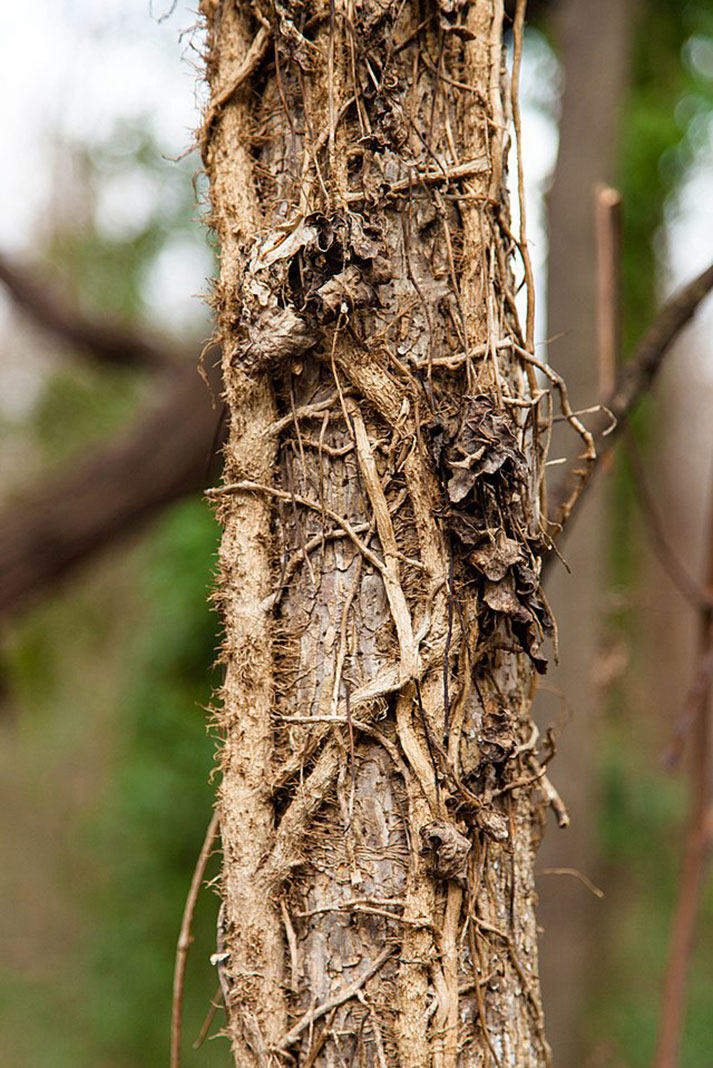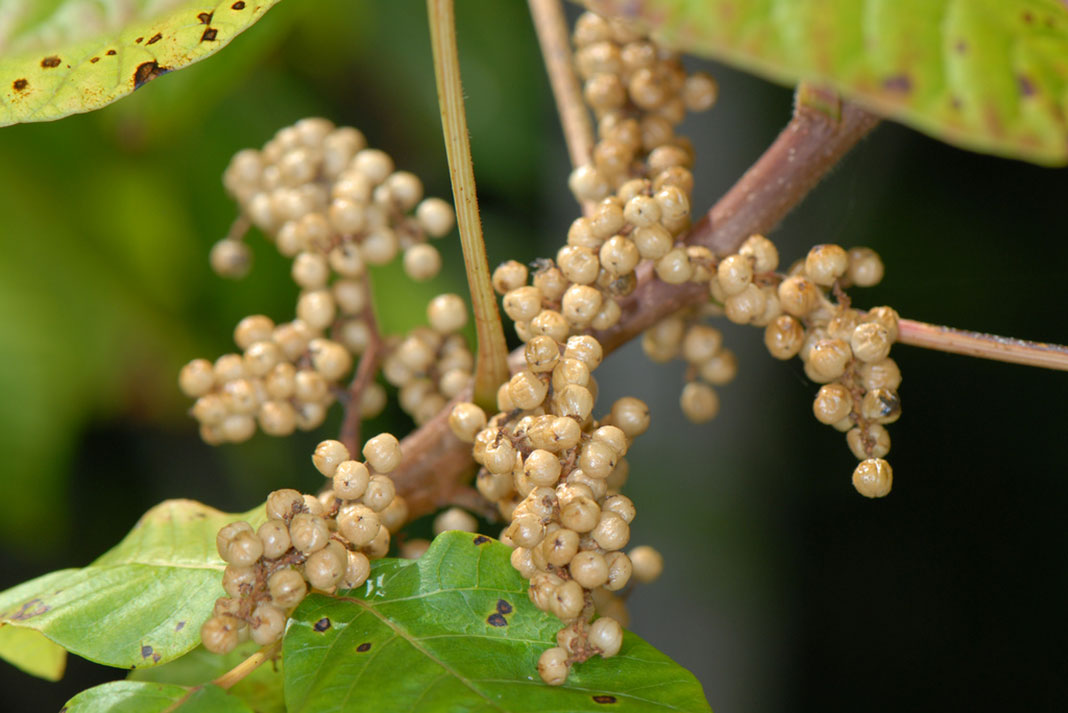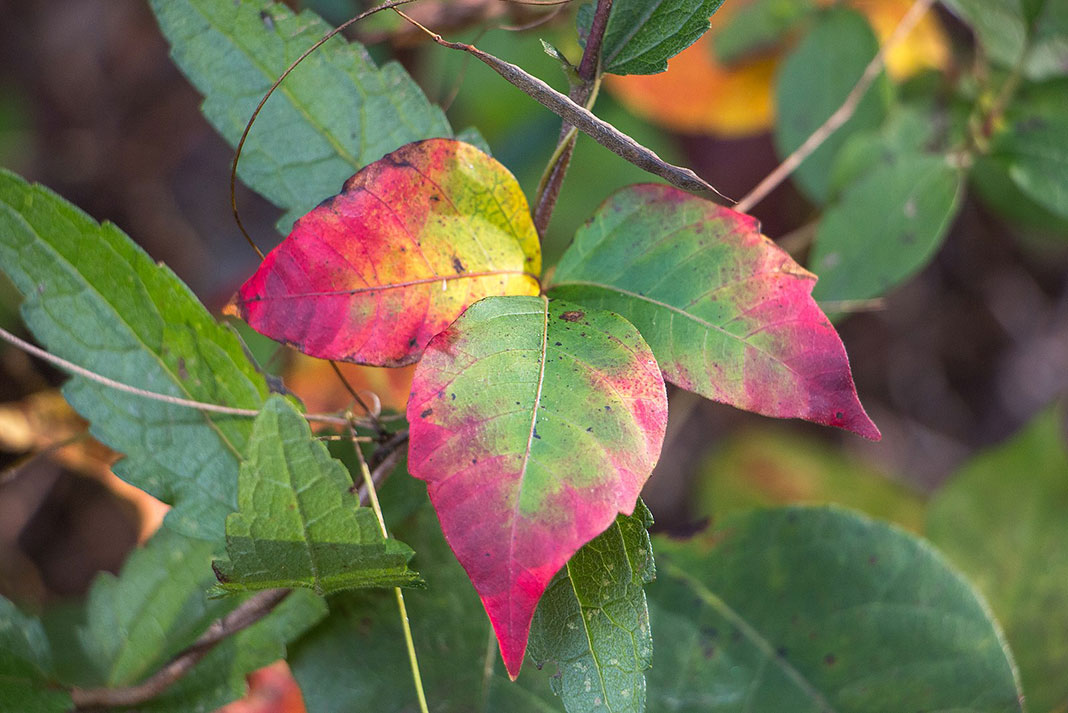Poison ivy ranges across most of Canada and the United States. Persistent sores and itching beset most humans who come into contact with the plant’s oil. With practice it is possible to identify the plant in its various forms and, if caught early, an exposure need not spell the end of an otherwise enjoyable paddling trip.

How to Evade Poison Ivy’s Itch
Poison ivy grows in many different forms. It can blanket the ground in a dense, low-lying mat; grow in a spindly shrub; stand in shin-high shoots or climb up trees as a vine, gripping the bark with wiry rootlets.
The noxious weed is often found along forest edges, beside portages, on shorelines, in open areas, behind beaches, throughout swamps and across rocky ridges. In other words, just about anywhere.
Whatever form it takes, all poison ivy bears the trademark cluster of three pointed leaves. Leaves are asymmetrical, waxy and droopy with small notches or irregular teeth along the edges.
Changing flowers, leaves and berries
Poison ivy’s color changes with the seasons. As they unfold in May, the leaves are a reddish purple; in the height of summer they’re bright green; and in the fall they turn bright red. Be on the lookout for bright red patches in sunny areas and yellowish varieties in the shade.
In the summer, greenish-white flowers form in two-inch-long clusters beneath the junction of the leaf and stem. Tiny white or dull-yellow berries cluster on the stalk.
Exposure and treatment
A painful, itchy, blistering rash occurs at least a day after contact with the oil of poison ivy’s leaves. This allergic reaction varies from person to person and ranges from no symptoms at all to mild itching to severe blisters leading to infection. A person’s susceptibility may change over time and after new exposures.
Wash with soap and water as soon as possible after suspected contact. If a reaction occurs, relieve itching with calamine lotion or baking soda and water. In the case of severe blisters, prescription drugs may be required.

When it comes to poison ivy, you need to heed the weed. | Feature photo: istockphoto.com









